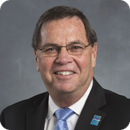At age 17, after interviewing hundreds of renowned thinkers, Nikhil Goyal wrote a book called, One Size Does Not Fit All. It offers a prescription to transform the American educational system.
I don’t claim to be as smart as that young man. But I’d like to borrow the title to his book and apply it to BART parking. Here’s why.
As a BART Director in Contra Costa County, most of my constituents depend on their cars. They have a very different commute experience than my colleagues whose constituents live in more transit and pedestrian friendly areas. Consequently, the solutions to help my constituents connect with BART may be different than those of some of my colleagues.
In January, BART staff made a presentation to the Board entitled “BART’s Parking Program: Update and Discussion.”
We board members learned that BART’s revenue from parking has increased from under $5 million in 2003 to $35 million in 2017. BART has a total of 48,000 parking spaces at 34 parking facilities. We have a systemwide waitlist total of 38,000 customers. Staff presented some possible solutions to dealing with easing the overcrowding in our existing lots. Those ideas included demand based pricing and variable pricing. These are fine ideas for consideration, but what about parking expansion?
So, I decided to do what young Nikhil did and speak with some pretty smart thinkers in my district. I contacted several local business owners about parking at BART. They asked, “Why is BART just trying to manage the overcrowding, and not capturing the revenue that could be generated by creatively accommodating the people whose names are on the waitlist?”
As a director who represents auto dependent riders, I think they are right. Let’s assume that the 38,000 names on the waitlist contains duplications, and that there are, say, 16,000 potential riders who are willing to pay parking fees to get a spot. That could increase our parking revenue to as high as $54 million, or a $19 million/year increase.
So why aren’t we looking at solutions to find more places to park and charging for those additional spots along with better managing the existing spots that we have now? Why not create satellite parking lots served by free shuttle buses? Why not partner with area businesses, local governmental agencies and others to use adjacent and existing parking more efficiently?
I believe each of these ideas merits further discussion and I look forward to a robust exchange of ideas when this item returns to the Board. I am sure that there are other ideas that we should explore, but as I said at the Board meeting, the solution to overcrowded parking cannot be a “one size fits all.”
The needs of auto dependent stations are different than the needs of stations in more urbanized parts of the District. While the solutions may be different, the differences should be respected.
Director Keller represents the BART District 2, which includes Antioch, Brentwood, Concord (partial), Oakley, Pittsburg, Bay Point, Byron, Knightsen, Bethel Island, and Discovery Bay.


Leave a Reply